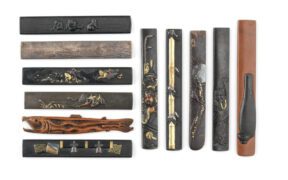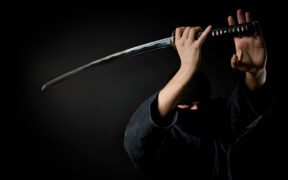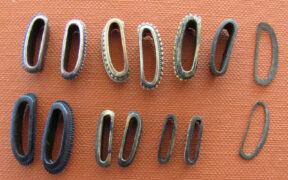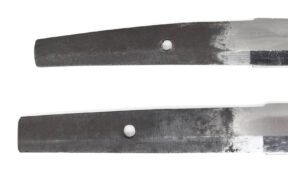Tsuka: Discovering the Complexities of the Japanese Sword Handle
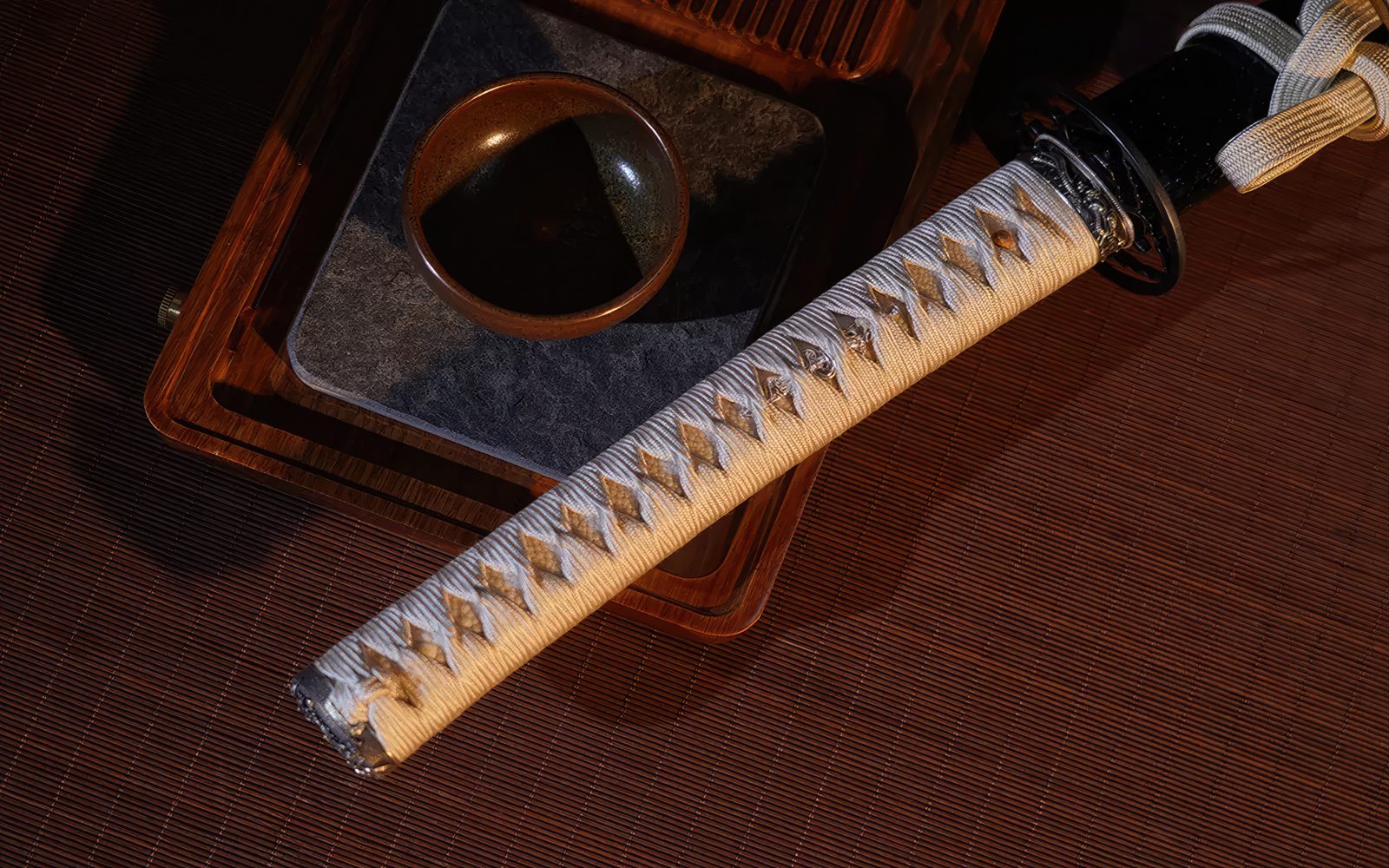
The Japanese term “tsuka” translates to “handle”. While samurai swords such as the Japanese katana, wakizashi, and tanto have captivated the world with their deadly design, historical significance, and exceptional craftsmanship, the importance of the tsuka is often overlooked. This integral part of the sword not only allows its wielder to use the weapon, but also affects how the weapon is used and presented.
Anatomy: Parts that Make the Tsuka
Highly overlooked and its importance disregarded, the tsuka is just as complex as the blade of the Japanese samurai sword. Consisting of several components, it has to be crafted meticulously with precision. Before delving into the details, learning the different parts would simplify the understanding of the Japanese sword handle.
Core
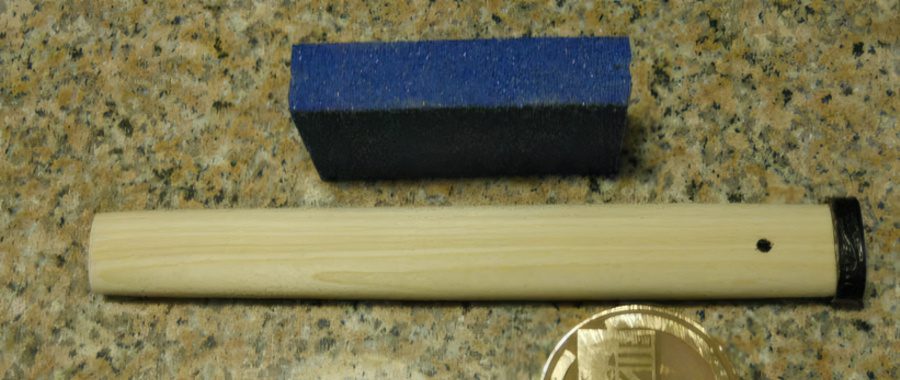
Japanese sword handles have a wooden core, made of Japanese honoki or magnolia wood, as seen in many traditional katana tsuka. Indigenous to Japan, Magnolia Hypoleucaea and Magnolia Obovata are known to produce non-resinous wood. These types of wood are chosen for their relatively straight grain, stability, low acidity, lightweight, and has great balance in terms of strength and cushioning, making it ideal for the tsuka.
Samegawa
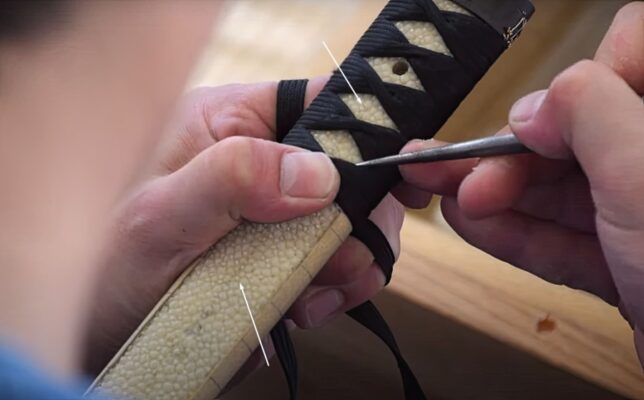
Samegawa or rayskin is traditionally used to cover the wooden core, made popular during the Heian Period. As its name implies, this material is sourced from sharks or rays. While most manufacturers use rayskin panels, a full samegawa wrapping is usually available upon request.
Due to their unique texture, durability, and ability to keep sweaty hands dry, the same offers the sword wielder a secure grill preventing the sword from slipping during use. There are three ways the samegawa can be used to wrap the tsuka:
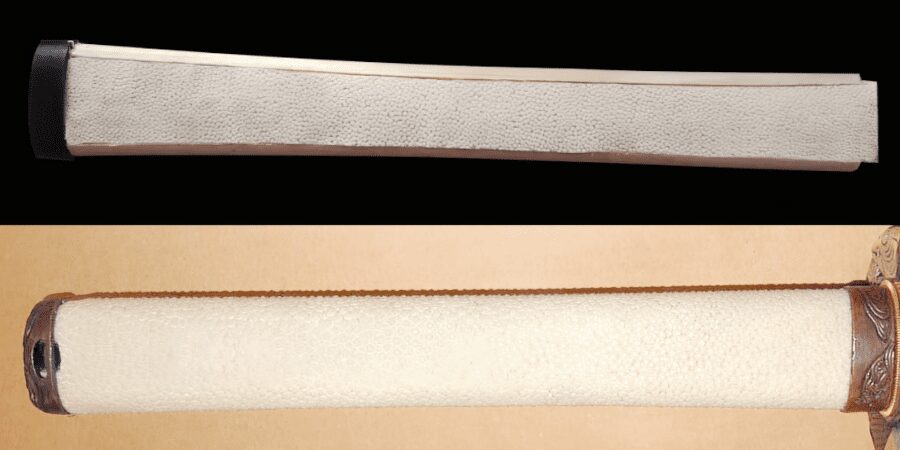
- Tanzaku gise – Panel (One Side): Two strips of rayskin are attached on either side of the handle.
- Hara awasegise – Full Panel: Same is wrapped around the handle.
- Maedara gise: Same wraps entirely around the hilt with the joint positioned along the cutting edge.
Tsuka Ito
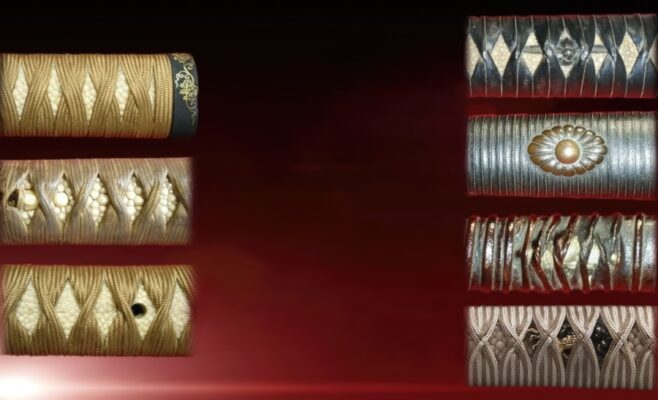
The tsuka ito refers to the cord that tightly wraps around the handle to hold the rayskin in place. This can be wrapped in various patterns (tsukamaki), providing additional grip, comfort, and adds to the overall aesthetics of the sword. In ancient times, the tsuka was wrapped with wisteria vines or bark from the lacquer tree. Today, the ito can be made from cotton, silk, leather, or synthetic materials.
Fittings on the Tsuka
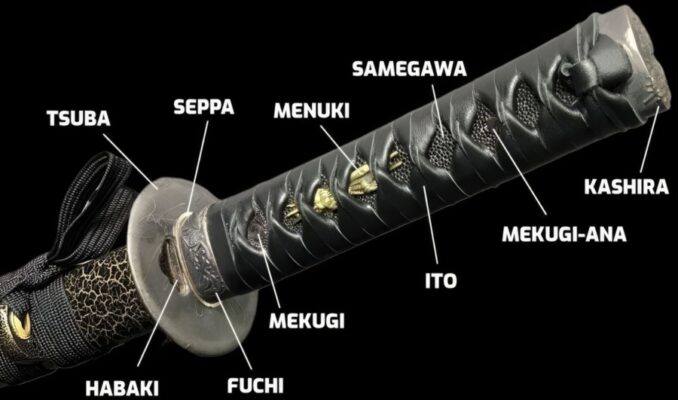
Besides the tsuka itself, there are also fittings that are on the tsuka to allow the sword to function better while adding designs and motifs for decor or to symbolize something meaningful to its wielder.
- Fuchi – This is a hilt collar that sits at the point where the handle meets the base of the blade. It helps to stabilize the tsuka and usually features designs that match the tsuba (guard) of the sword.
- Mekugi – The mekugi (peg) secures the nakago (tang) of the blade to the hilt to give it a tighter fit and ensure its stability. Typically made from bamboo or any other sturdy material, a sword can have one to four pegs or more!
- Menuki – Made from metal or alloy, the menuki is a decorative ornament placed beneath the tsuka ito. Typically featuring motifs on nature or Japanese lore, it serves an aesthetic purpose while helping to improve the grip.
- Kashira – Serving as a counterweight to the blade, the kashira is a metal cap fitted at the end of the tsuka, giving the handle a secure finish.
Basic Tsuka Shapes
Like the different shapes of blades available, there are also varieties of tsuka depending on the personal preferences of the swordsmith, wielder, and on the school of sword-making. There are four basic shapes of Japanese sword handles as explained below:
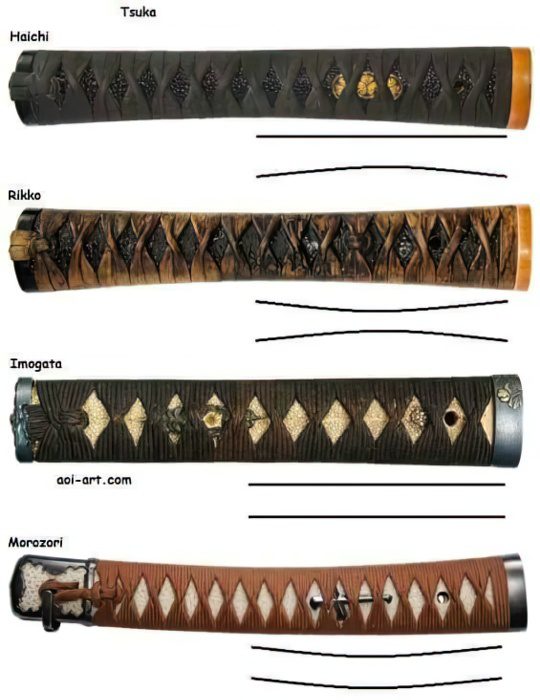
Haichi Tsuka
This is the commonest shape of tsuka where the side continuing after the mune of the sword is almost straight. Meanwhile, the other side that continues after the ha is slightly tapered.
Imogata Tsuka
The term “Imogata” translates to “potato shape”, a name that is perhaps given due to being the simplest of all Japanese sword handles where both sides of the tsuka are completely straight. It is therefore often seen in mass produced swords.
Rikko Tsuka
The Rikko tsuka or Ryûgo refers to a handle with an hourglass shape. This means that the sides on both the mune and ha have the central part curving inwards to provide a secure and more comfortable grip for its wielder.
Morozori Tsuka
The Morozori tsuka is mostly seen in tachi swords, and it is made in a way to resemble the shape and curve of the saya. This means that both the sides that continue from the mune and ha curves in the same direction.
Recommended Tsuka Length
The length of the handle is usually made based on the wielder’s specifications, with the average length around 9.5 inches (24 centimeters). The length of the tsuka varies for different swords with the general rule for a:
- Katana – twice the width of the wielder’s hand with two additional fingers
- Wakizashi – one and a half times the width of the wielder’s hand
- Tanto – width of one of the wielder’s hand
The Tsuka’s Role in Japanese Swords
The tsuka is an important element that contributes to how Japanese swords are valued. In feudal Japan, daimyo were known to give each other tsuka with elaborate and expensive decorations.
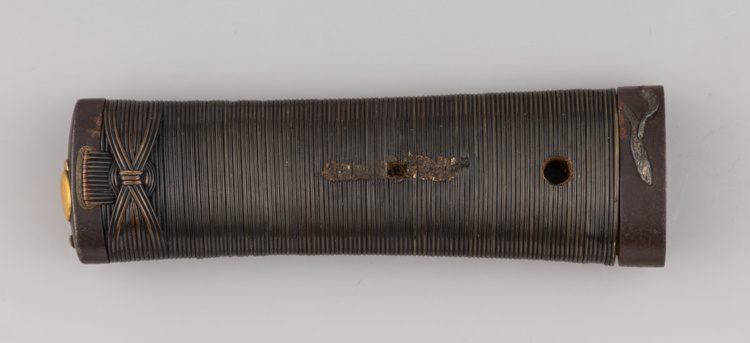
Sword Grip
One of the obvious roles of the tsuka is to provide a comfortable and secure grip for the sword’s wielder. The materials used here plays a crucial role as the samegawa and type of tsuka ito used ensures that the sword remains firmly in hand.
Balance and Control in Swordsmanship
The tsuka of a sword has to be made in a way to evenly distribute the sword’s weight, giving its wielder the ability to balance the blade during practice. This allows for precise and fluid movements.
Connecting Point
When a sword is in use, the tsuka is the connecting point between wielder and sword, acting as an extension to transmit energy efficiently. Therefore, a well crafted handle helps the wielder to fully utilize their skills, speed, and strength.
Presentation
During the Edo period, there were many formalized rules including how a katana is presented. In times of war, the tsuka faces the right side, allowing the sword to be unsheathed readily. In times of peace, the katana tsuka is displayed on the left side.
Who Makes the Tsuka?
Traditionally, the creation of a Japanese sword is extremely challenging and involves many artisans. With at least eight individuals involved in the process, this includes the murage who operates the tatara (furnace), tosho or bladesmith, tosogu shi who creates the fittings, togi shi who polishes the blade, and more.
When it comes to the handle of the Japanese sword, the person responsible is known as the saya shi, often known as the scabbard maker. This expert carves both the tsuka and saya using planes, knives, chisels, and other tools to achieve the final shape.
The saya shi obtains the handle’s fittings including the fuchi, kashira, and menuki from the tosou shi before collaborating with the tsukamaki shi to finish the handle. This begins by applying the ray skin, figuring out the position of the menuki, and finalizing the wrapping of the handle, often using hineri maki for contemporary swords and tsumami maki for antique and art swords.
Determining the Quality of a Tsuka
There are several factors when it comes to determining if a tsuka is of high quality. Besides affecting the wielder, it also plays a key role in the appearance of a sword.
Tsuka Ito & Tsuka maki
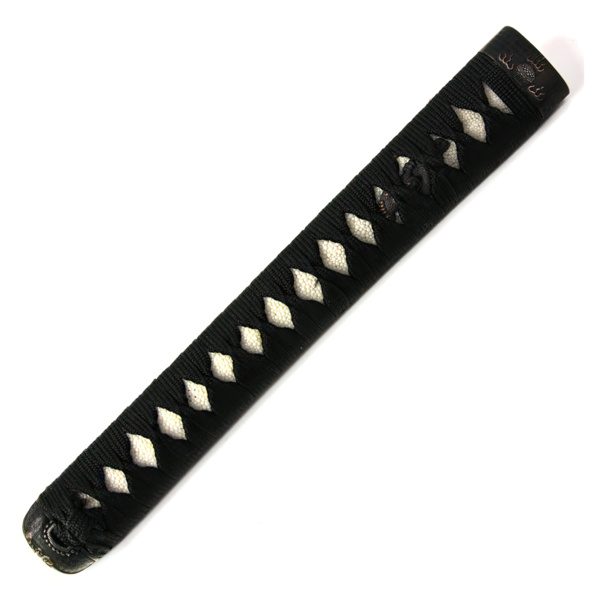
The handle is wrapped with tsuka ito made of fabric or leather. It has to be wrapped tightly to ensure that the sword’s wielder has a secure and comfortable grip. The wrapping must also have negligible to no difference in level with the fuchi and kashira. The presence of any bumps means that the tsuka ito has not been stretched properly during the wrapping process, resulting in an unstable and painful grip.
During the wrapping process, the single tsuka ito used should alternate between top and bottom at each fold to avoid it from easily unraveling if it is cut in the midst of battle. This wrapping process also forms “diamonds” that allow the samegawa beneath to show through. As such, these “diamonds” should appear uniform, contributing to the aesthetics of the sword and ensuring that the grip remains stable.
Additionally, swords have defined front (sashi omote) and back (sashi ura) sides when they are sheathed. This means that the tsuka maki on the front side must begin with an ichimonji (straight line). Likewise, the closing knot for the front uses an omote dome knot while the back uses an ura dome knot.
Menuki
Before securing the menuki on the tsuka, ensure that it is mounted in the proper direction. While there are many variations of menuki, the general rules include having the head of an animal and the roots or stem of a plant in the direction of the fuchigane.
